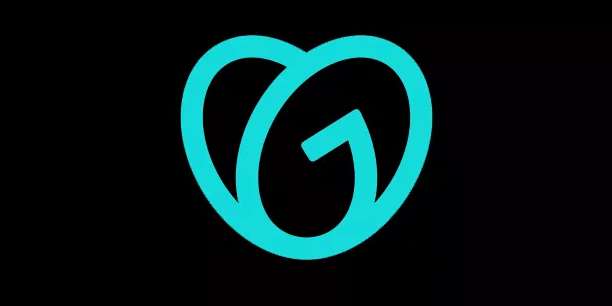Once your marketing foundation is set, it’s time to learn how to drive traffic to your site. The best brand and product in the world won’t matter if no one can find it.
Getting started with traffic generation
For small business owners, driving traffic often requires balancing budget-friendly tactics and consistent, strategic efforts. Some of the most effective visibility tactics are SEO, social media marketing, and content marketing. Let’s discuss these options and how they can help drive traffic to your website.
SEO for beginners
For small and medium-sized businesses (SMBs), search engine optimization (SEO) can seem like a daunting, technical puzzle. However, it doesn’t have to be. Think of SEO as a way to make your website more accessible and appealing to both search engines and potential customers.
Done right, SEO can help your business appear in front of customers who are actively searching for products or services like yours. And while high-level SEO requires time and patience, there are some quick wins every SMB can achieve.
What is SEO and why it matters
SEO is the process of improving your website to increase its visibility on search engines like Google. When someone types in a query—say, “local coffee shop near me” or “sustainable beauty products” — the search engine’s goal is to deliver the most relevant and trustworthy results. SEO helps your business rank higher in these results, ideally on the first page, because 75% of users never scroll past the first page.
For SMBs, search engine optimization evens the playing field, allowing smaller brands to compete with larger businesses through well-targeted keywords and high-quality content. SEO is an ongoing process that can lead to long-term, organic traffic growth, meaning more customers find you without you paying for ads.
Quick wins: On-page SEO basics for SMB websites
Starting with on-page SEO (elements you control on your website) is one of the fastest ways to improve your search ranking. Here are some beginner-friendly small business SEO tips:
1. Keyword research
Use free tools like Google Keyword Planner or Ubersuggest to identify relevant keywords for your business. For example, a local bakery might target keywords like “fresh pastries in [City]” or “best cupcakes near me.”
Not sure what an effective meta description should look like? Here’s a comparison between a bad and a good meta description for a cupcake bakery named Sweet Heat Bakery in Tempe, AZ:
| Bad meta description example | Good meta description example |
| Cupcakes cupcakes cupcakes! Sweet Heat Bakery has the best cupcakes in Tempe AZ. We sell cupcakes, cakes, cookies, brownies, pies, pastries, and more desserts. Open Monday-Saturday 9am-6pm. Family-owned since 2010. Call now! | Indulge in gourmet cupcakes with a spicy twist at Sweet Heat Bakery in Tempe. Our unique flavor combinations will tantalize your taste buds. Visit today! |
| This meta description is poor because: It's too longThe wording is unprofessionalAwkward keyword stuffingMultiple and confusing calls-to-actionIncludes unnecessary details, like operating hours | This meta description is better because: Stays within the 160-character limitHighlights a unique selling point (gourmet cupcakes with a spicy twist)Uses an effective call-to-action Naturally incorporates relevant keywords without stuffing |
Related: How to improve your website SEO
2. Optimize page titles and meta descriptions
Your page title should include primary keywords while sounding natural. The meta description is a short blurb that appears under the title in search results. It’s not directly used for ranking, but it can increase click-through rates if it’s compelling.
3. Content structure
Use headings (H1, H2, etc.) to organize content and make it easy to scan. A clear structure not only helps readers but also search engines understand your page.
4. Alt text for images
Adding descriptive alt text to images (e.g., “fresh blueberry muffins from [Bakery Name]”) improves accessibility and helps search engines understand your visual content, which can enhance rankings, especially in image searches.
These small changes can have a big impact on search rankings and don’t require extensive technical knowledge.
Long-term SEO strategy
Once you’ve got the foundation of your SEO strategy set, it’s important to then define your long-term SEO strategy. Here’s a quick outline of how that might look over a six-month period:
Month 1: Research and planning
- Conduct comprehensive keyword research
- Perform a technical SEO audit
- Analyze competitors' SEO strategies
- Develop a content calendar
- Set up analytics and tracking tools
Month 2: On-page optimization
- Optimize existing content for target keywords
- Improve meta titles and descriptions
- Enhance internal linking structure
- Optimize images (alt text, file names, compression)
- Implement schema markup where appropriate
Month 3: Content creation and link building
- Begin creating high-quality, keyword-targeted content
- Start outreach for guest posting opportunities
- Develop a strategy for acquiring quality backlinks
- Optimize for featured snippets
Month 4: Technical SEO improvements
- Improve site speed and mobile responsiveness
- Fix any crawl errors or broken links
- Implement SSL if not already in place
- Optimize URL structure and site architecture
Month 5: Local SEO and user experience
- Optimize Google Business Profile listing
- Encourage and manage customer reviews
- Improve site navigation and user experience
- Implement local schema markup
Month 6: Analysis and refinement
- Analyze progress and adjust strategy as needed
- Identify new keyword opportunities
- Scale successful content strategies
- Continue link-building and content creation efforts
Throughout the process, you should monitor your metrics to gauge the effectiveness of your efforts. To track SEO progress, you’ll want to utilize tools like Google Analytics and third-party rank trackers like SEMrush.
Another important consideration is that SEO is an ongoing process. Your results will vary depending on factors like competition, your specific industry, and your business's particular niche. While some results may be visible within 3-6 months, substantial improvements often take a year or more. Patience is key to long-term SEO success.
The social media and website connection
Surprised to see social media mentioned here? Social media marketing can be a great way to raise awareness for your business and drive traffic to your website. However, not every platform is right for every business, and knowing where to focus can make a big difference.
Choosing the right platforms for your audience
Start by determining where your audience spends time. If you’re a B2B software company, LinkedIn might be your top choice. If you’re a lifestyle brand, Instagram or TikTok could be better fits. Social media marketing for small businesses ideally should focus on one or two primary platforms to avoid spreading their efforts too thin.
Example: Let’s say you run a local plant nursery. Instagram might be ideal because it’s a visual platform where you can post photos of beautiful plants, care tips, and updates about your latest arrivals. For a family-owned pizzeria, Facebook might work best because of its local groups, events, and easy-to-share posts.
Platform-specific strategies
Once you’ve nailed down which platform(s) you’ll be focusing on, you’ll need to tailor a strategy to fit that platform. Here’s a quick rundown of each of the major platforms:
If you’ve opted for Facebook as your platform of choice, these are the steps you’ll want to take to get the most out of it.
Optimize your business page
Create a Facebook Business Page for your business. Include your contact info, website, hours, and a compelling bio. Be sure to use a professional profile photo (e.g., logo) and an engaging cover photo that reflects your brand.
Define your audience
Use Facebook Insights to analyze demographics (age, gender, location) and tailor your content accordingly. It’s also a good idea to research competitors and use Facebook’s Audience Insights for deeper targeting.
Create a content strategy
To get the most out of your Facebook page, it’s important to post consistently. This means three to five times weekly with a mix of visuals (images, short videos), tips, promotions, and user-generated content. You can also share tutorials, behind-the-scenes stories, and customer testimonials. We recommend using a content calendar to plan ahead and maintain consistency.
Boost your engagement
Engagement boosting requires a few factors:
- Respond promptly to comments and messages.
- Run polls, ask questions, and encourage discussions.
- Create or join Facebook Groups to build a community around your niche.
Leverage Facebook ads
When wading into Facebook's ad space, you’ll want to start with a small budget for targeted ads (focus on location, interests, and behaviors). Keep in mind that you can use retargeting ads to re-engage website visitors or past customers. And it’s a good idea to continually test ad formats (carousel, video) and optimize based on performance.
Promotions and contests
A sure-fire way to attract attention for your brand on Facebook is contests. You can offer Facebook-exclusive discounts or early access to incentivize followers. Or you can host contests (e.g., “Tag a friend” or “Share to win”) to expand reach. Don’t overdo it with contests and promotions, but it is an effective tool to boost your following on occasion.
Utilize live video
If you're interested in live video, you can host live Q&As, product demos, or events to engage with your audience in real time. To maximize attendance, promote your live sessions in advance. Not every business lends itself to this format, but it can be an effective platform for community engagement.
Key takeaway: Focus on building relationships, providing value, and using data to refine your approach. Stay consistent, engage authentically, and leverage cost-effective tools like ads and live video to grow your audience.
While also a Meta-based platform, the rules of engagement are very different on Instagram. Here are some suggestions on how to thrive as a business on Instagram:
Create a business profile
You’ll want to use an Instagram business account rather than a personal account. When setting up your profile, make sure to craft a concise, keyword-rich bio with a clear value proposition, contact info, and a link to your website.Use a recognizable profile photo (e.g., logo) and create Story Highlights to showcase products, FAQs, or testimonials.
Define your audience
Instagram Insights is a useful tool that you can use to track follower demographics (age, gender, location, active hours). With that information, it's a good idea to also research competitors and trending hashtags in your niche.
Set your content strategy
Instagram is a highly-visual platform and you’ll need to set your strategy accordingly:
- Post consistently: Aim for 5-7 posts weekly, prioritizing high-quality visuals (photos, Reels, carousels) and Stories.
- Focus on aesthetics: Maintain a cohesive visual theme (colors, filters) to build brand recognition.
- Mix content types: Share educational posts (tips, tutorials), behind-the-scenes content, user-generated content (UGC), and promotions.
- Leverage hashtags: Use a mix of niche-specific (e.g., #SmallBizTips), branded, and trending hashtags (3-5 is ideal).
Boost your engagement
Responding to comments and direct messages is key on Instagram, but don’t overlook features like polls, quizzes, or Q&As to really engage your audience.
Promotions and contests
On Instagram, hosting a cross-collaboration with a joint giveaway is a great way to boost your following. You can also offer Instagram-exclusive discounts and encourage your followers to tag your brand in their posts.
Instagram Live and Reels
Attract attention for your brand by going live to announce product launches, Q&As, live interviews, etc. Consistently posting Reels allows you to tap into trends and showcase your products. Reels are also a fantastic way to share quick tips about your products/services.
Key takeaway: Prioritize visual storytelling, authenticity, and community-building. Use Reels and Stories to stay algorithm-friendly and engage consistently.
For small businesses with a B2B focus, LinkedIn can be a great place to build a following.
Set up a LinkedIn Page
It's important to have a business page on LinkedIn. You’ll want to set one up with your logo, a compelling banner image, and a keyword-rich description highlighting your value proposition.
Define your audience
LinkedIn allows you to target other LinkedIn profiles by industry, company size, and seniority.
Establish a content strategy
The types of content used on LinkedIn vary a bit from other platforms, so how and when you post will be key:
- Post consistently: Three to five times weekly with a mix of thought leadership articles, industry news, case studies, and company updates.
- Create educational content: Share how-to guides, whitepapers, and data-driven insights to position your brand as an expert.
- Use hashtags: Three to five relevant, industry-specific hashtags (e.g., #SmallBusiness, #Leadership) per post.
Collaborate and network
Long-form articles posted to LinkedIn’s publishing platform help you showcase your expertise and find other like-minded business owners. Be sure to engage with the comments on your post to boost visibility.
Utilize LinkedIn Live
LinkedIn Live is a great place to showcase your business. Keep in mind that, unlike other social media platforms, you can’t directly stream on LinkedIn. You’ll need a third-party broadcast tool to do so.
Key takeaway: Position your brand as a thought leader by sharing valuable, professional content. Prioritize relationship-building with decision-makers and use LinkedIn’s targeting tools for precise B2B outreach. Stay active in post comments and focus on quality over quantity to build trust in professional networks.
TikTok
TikTok is a trendy place where content moves quickly. If short-form video content is a good fit for your small business, here’s some tips on how to make the most of it.
Make a TikTok Business Account
As with the other social media platforms, you’ll want to create a TikTok Business Account for your company. This account type gives you extra tools to support your account growth. Don’t forget to link back to your website in your bio.
Define your style
With TikTok, it’s important to find a way to stand out. To figure out how you’d like your videos to look and sound, you can research trending sounds, hashtags, and challenges in your niche using TikTok’s Discover page or third-party tools like TrendTok.
Establish a content strategy
Here’s a few tips on how you can get found on TikTok:
- Be consistent: Aim for three to five posts weekly, prioritizing short (15-60 second), high-energy videos.
- Embrace trends: Jump on trending sounds, hashtags, and challenges—add your unique twist to stand out.
- Mix content types: Share tutorials, behind-the-scenes clips, product demos, humor, and user-generated content (UGC).
- Hook viewers fast: Capture attention in the first 3 seconds with bold visuals, text overlays, or questions.
Engage your community
Collaboration is definitely encouraged on TikTok. Respond to your comments, stitch/duet related content, create polls, and collab with fellow business owners to grow your reach.
Host promotions and contests
TikTok is the perfect place for contests and promo content.
- Host challenges (for example, “Show us how you use our product with #YourBrandChallenge”).
- Offer limited-time discounts or freebies for followers who tag friends or share your video.
- Repost UGC and credit creators to foster loyalty.
Key takeaway: TikTok thrives on authenticity, creativity, and trend participation. Focus on entertaining or educating viewers quickly, lean into viral trends, and engage actively with your community. Stay agile. What’s trending today might fade tomorrow!
Create engaging content on a budget
Creating content doesn’t have to be expensive. A smartphone and a few creative ideas can go a long way. Here are some budget-friendly content ideas:
- Behind-the-scenes photos and videos: People love seeing the human side of businesses. A quick video showing how products are made or a “day in the life” post can build a connection with followers.
- User-generated content (UGC): Encourage customers to share photos of your product and tag your business. UGC adds authenticity to your feed, and you get content without having to create it yourself.
- Educational tips: Share knowledge related to your business. A pet grooming service, for example, could post quick pet-care tips or short tutorials on handling common issues like trimming nails.
- Customer testimonials: A simple quote from a satisfied customer can be powerful. Try posting these with a photo or graphic to make it more engaging.
Consistency is key, but that doesn’t mean posting every day. Aim for quality over quantity, and schedule your posts in advance using tools like Buffer or Later, which offer free plans for small businesses.
Content marketing that drives traffic
Content marketing is a powerful way for SMBs to build brand awareness, attract potential customers, and position themselves as experts in their field. Unlike direct advertising, content marketing provides value upfront, often for free, which builds trust and helps prospects see your brand as a helpful resource.
Why content marketing works for SMBs
Content marketing is highly versatile and can be adapted to almost any budget. Instead of “selling” to your audience, you’re educating and engaging them, building a positive association with your brand. Imagine a small law firm that publishes blog posts about common legal questions for small business owners.
By providing valuable insights, they attract entrepreneurs who might later need legal services.
Content marketing also pays off long-term. A single blog post that ranks well in search engines can continue driving traffic months or even years after it’s published.
Types of content and how to create them
Creating diverse content types helps engage different segments of your audience and showcases your brand in various ways:
- Blog posts: Blog posts are ideal for sharing in-depth knowledge, answering customer questions, and boosting SEO. Use tools like Canva to create graphics or infographics to make your blog posts visually appealing and more shareable.
- Videos: Video content is highly engaging, especially on social media. Short-form videos (30-60 seconds) work well on Instagram Reels, TikTok, or YouTube Shorts. For example, a bakery could create quick recipe videos or show the process of decorating a cake. For longer, informative videos, YouTube is an excellent choice.
- Infographics: Infographics are a visual way to present complex information in a digestible format. If you’re a personal finance coach, for example, you could create an infographic showing “5 Steps to Financial Health” with clear icons and short descriptions.
- Ebooks or guides: If you have a lot of expertise in a specific area, consider creating a free ebook or guide as a lead magnet. For instance, a wellness coach might offer a “10-Day Healthy Habits Guide” in exchange for visitors signing up for their newsletter.
To create this content affordably, use tools like Canva for graphics, iMovie for video editing, or Google Docs for writing and collaboration. Focus on delivering value over perfection—what matters most is that your content addresses real questions, interests, or problems your audience has.
Creating content that ranks
To drive traffic, boost SEO, and connect with your audience, a strategic approach to keyword research and content optimization is key. Here’s how to nail both:
Research keywords
First, you’ll want to start off with broad topics related to your business. If you’re a clothing company, for example, “sustainable fashion” may be a topic that you’re interested in. Then, you’ll want to narrow down the topics based on your goals. Are you targeting “how to” searches? Or are transactional keywords (such as “best [product] for…”) what you’re looking for? Combining topics with your goals will help you refine your keywords quicker and more effectively.
Once you’ve defined your topics and goals, you’ll want to run them through keyword research tools to see which ones will be most effective. Tools like SEMrush and Google Trends will help you find recommended keywords by showing trending data, as well as content gaps for your competitors.
Optimize your content
Keywords will help guide your content creation and optimization. Here’s a checklist on how you can apply those keywords to your content so that you can rank:
- Keyword placement
- Include the primary keyword in:
- Title tag (keep under 60 characters).
- First 100 words of the content.
- At least 1–2 subheaders (H2/H3).
- Meta description (under 160 characters).
- Use secondary keywords naturally throughout the body.
- Include the primary keyword in:
- Readability
- Break up text with short paragraphs, bullet points, and subheaders.
- Aim for a Flesch reading ease score of 60+ (use tools like Hemingway Editor).
- Internal and external Links
- Link to 2–3 relevant internal pages (older blog posts or product pages).
- Include 1–2 authoritative external links (studies or industry reports).
- Multimedia optimization
- Add images/videos with descriptive filenames (“organic-cotton-tote-bag.jpg”).
- Compress images to reduce load time (use TinyPNG or Squoosh).
- Include alt text for images (“woman carrying eco-friendly tote bag”).
- Mobile-friendly design
- Ensure content is responsive and easy to read on mobile devices.
- CTAs (Calls to Action)
- Add clear CTAs (“Download our free SEO checklist” or “Shop now”).
- Update old content
- Refresh outdated posts with new keywords, stats, and links.
Keyword research ensures your content aligns with what your audience is searching for, while optimization makes it easy for search engines (and humans) to understand. Focus on quality, relevance, and user intent to build authority and drive growth.
Putting it all together
With SEO, social media, and content marketing working in tandem, SMBs can create a visibility strategy that builds awareness, attracts new customers, and establishes trust — all without breaking the bank.
When these tactics are combined thoughtfully, you’re not only driving traffic but building a brand that resonates with your audience, increasing the likelihood of turning new visitors into long-term customers.







